Papers by AI Kano
GA Journal Vol.1, 2020
"Critical Art Ensemble and Emerging Art and Culture Scenes Traversing Biotechnology, Art and Acti... more "Critical Art Ensemble and Emerging Art and Culture Scenes Traversing Biotechnology, Art and Activism"
This paper focuses on emerging art and culture scenes surrounding biotechnology specifically: bio art, biopunk (also known as bio hobby, DIY biology, kitchen bio, etc.) from the late 1990s to the early 2000s. This paper will also examine tactical media which emerged during the same period.
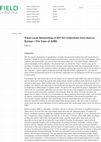
FIELD: A Journal of Socially-Engaged Art Criticism, 2017
With the present development of globalization, activities that transcend borders have both expand... more With the present development of globalization, activities that transcend borders have both expanded and diversified. People all over the world transmit local information using the internet and mobile phones, social networks, and social media. Low cost air travel has rapidly taken root in the airline industry, allowing for cultural exchanges to thrive globally in the physical realm, as well as the virtual. In recent years, as the circulation of people, things, and information has been made easier by these new infrastructures, activism through the vehicle of a very traditional medium, woodblock printing, has paved the way for the formation of new networks in various regions of east and southeast Asia that combine politics and art. I will examine some of these developments as forms of art activism, particularly from the perspective of DIY (do-it-yourself) or punk culture.

『武蔵野美術大学研究紀要 2016-no.47』("Bulletin of Musashino Art University"), 2016
社会的領域で芸術の可能性をどこまで押し拡げることができるかという課題は、この 20 年ほど アートと社会運動が交差する領域、アートアクティヴィズム研究で議論されてきた。本稿... more 社会的領域で芸術の可能性をどこまで押し拡げることができるかという課題は、この 20 年ほど アートと社会運動が交差する領域、アートアクティヴィズム研究で議論されてきた。本稿は、日本 で 2014 年に結成した木版画をメディアに反戦・反核を訴えるアート・コレクティブ「A3BC (Anti-War, Anti-Nuclear and Arts of Block-print Collective):反戦・反核・版画コレクティブ」 に焦点を当て、3.11 後の日本のアートアクティヴィズム研究の発展につながる示唆や仮説を見出し たい。A3BC は、ヒエラルキーを排した DIY カルチャーの価値観を共有するアジアや欧米のコレク ティブとトランス・ローカルなネットワークを形成し、アートと社会運動の現場を横断する文化活動であることが調査から明らかになった。結論として、A3BC が社会学および美術史の研究の文脈 のどちらか一方では捉えきれない枠組みであることを指摘し、芸術と政治の学術的研究も従来の領 域の境界を越えるる視点を持つことが重要になると論じた。
Emglish Abstract
These past 20 years or so, the question of how far art can expand within the social realm has been debated in the study of art activism, a field wherein art and social movement intersect. In this paper, by focusing on the anti-war, anti-nuclear Japanese wood block print media of A3BC(Anti-War, Anti-nuclear, and Arts of Block-print Collective) formed in Japan in 2014, I will propose some key points and hypotheses connected to the development of art activism in post-3.11 Japan. Research has clarified that, along with a DIY culture values that break down hierarchies, A3BC is a cultural movement that forms a collective, translocal movement between Asia and the West, and the confluence of the fields of art and social movements. In conclusion, A3BC indicates that, in the context of social studies and art history research, either field is an elusive framework. Moreover, this paper argues that academic research of art and politics requires a point of view that transcends the boundaries of conventional fields.

音楽文化学論集("The Annual Review of Musicology and Mysic Studies"), 2014
This paper examines the possibility of art activism through a discussion of Brian Holmes’ work on... more This paper examines the possibility of art activism through a discussion of Brian Holmes’ work on art activism. “Eventwork” is a concept proposing four effective vectors in the cultural strategies in the history of social movements. The aim of eventwork is to activate one’s autonomy to a political form of living as well as to articulate participation and coalition to subvert the cultural confinement of the current borders of professions and disciplines.
Eventwork is a convergence of art, theory, media and politics mixing multiple professional skills. To examine these modes of eventwork, we will examine a cultural event called ‘Tucumán Arde’ in 1968. Here, vanguard artists used counter-information, proliferated their images and deployed experimental art to challenge government propaganda.
According to Brian Holmes, Fordist modernization and post-Fordist alienation and immaterial production generate complex social problems such as ecological destruction, economic inequality and the repression of minorities. Additionally, Holmes denounces artistic and cultural resistances established in simply institutional terms such as “relational art” or “critical theory”. For Holmes, art activism is an earnest counter-movement against modernization and capitalism.
However, there is another perspective or strategy for art activism. The Japanese artist and art critic Yoshio Shirakawa proposes an attitude of being anti-Capitalist in both institutional and non-institutional forms. Shirakawa, for instance, argues that some tribal museums develop their own criteria of collection to support minorities and counter culture. He also points out anonymous and individual protest activities should be included in art activism.
In conclusion, we will define art activism and the forward agenda of the Eventwork concept: how to realize cooperative cultural practice in contemporary society? It seems to be difficult to expect fundamental transformation in the post-Fordist era as we are faced with critical problems such as nukes, repressive laws, and neo-liberalism. That is why artists are likely to be, or expected to become, mediators between individual talents, public engagement and social problems via aesthetic expressions. A significance of art activism is to utilize tactics to make alternative relations within and beyond the norms of each field and also of the notion of art activism itself.
Thesis Chapters by AI Kano
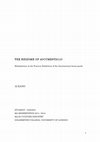
This is my MA dissertation in MA in Culture Industry in the department of CCS at Goldsmiths Unive... more This is my MA dissertation in MA in Culture Industry in the department of CCS at Goldsmiths University of London in 2011/2012. It examines the exhibition’s construction of dOCUMENTA(13) demonstrating multiplicity and multitude in the rhizome as related to complex individuality. We apply the concept of the rhizome to the analysis, because its decentralized network structure depicts the uniqueness and concept of dOCUMENTA(13). We will investigate immanent complexities and multiplicities to see artworks by Geoffrey Farmer, Zanele Muholi, Nalini Malani and Lea Porsager. They exemplify multiplicity within multiplicity between individuality and globalization influenced by the aftermath of the Second World War. The curator Carolyn Christov-Bakargiev investigates and explores narrative embodiments of identity attempting to liberate such narratives from inherited collective and individual perceptions and genealogies; it is with this contribution that I propose to examine this Documenta.
Books by AI Kano
Inter-Asia Self-Organized Woodcut Mapping Series III: Institution and Beyond, 2022
This is the third issue of the Inter-Asia Self-organized Woodcut Mapping Series (a.k.a. Woodcut Z... more This is the third issue of the Inter-Asia Self-organized Woodcut Mapping Series (a.k.a. Woodcut Zine), and it is the first time that we self-finance our publications. It draws our attention to ponder on the relationship between self-organized/ self-publishing practices and mainstream institutions, as well as the positioning of this publication.
Rethinking Collective: Mapping on the Development of Woodblock Printing Collective in Inter-Asian... more Rethinking Collective: Mapping on the Development of Woodblock Printing Collective in Inter-Asian Context / The Editorial Board
再思「集體」:圖繪亞際木刻版畫集體的發展/編輯部
The Left-Wing Spirit of the Indonesian Artist Collective Taring Padi / CHEN Wei-Lun
印尼藝術家集體「稻米獠牙」的左翼精神/陳韋綸
Collaboration or Social Mobilisation? The Historical Context of Gotong-Royong and Its Politics / Krystie NG
自發協作還是社會動員?談Gotong-Royong的歷史獄警及其政治/吳君儀
How to Sustain a DIY Artist Collective? In the Case of A3BC / KANO Ai
如何持續發展一個DIY藝術家集體?:以A3BC為例/狩野愛
“To Exist Like a Mystery”: The Dynamic of Trans-Local Cultural Activism Network in East
Asia / LEE Chun Fung
「像充滿謎團的存在」:東亞跨地域文化行動的動態網絡/李俊峰
From “Popularisation” to “De-popularization”: Rethink Woodcut Printing in the Context of Chinese Contemporary Art / LI Ding
從「大眾化」到「去大眾化」:重新思考中國當代藝術語境中的木刻創作/李丁


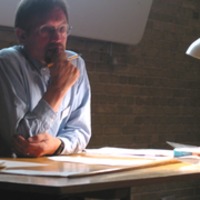



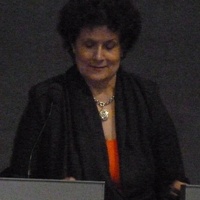
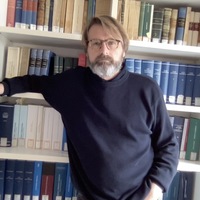


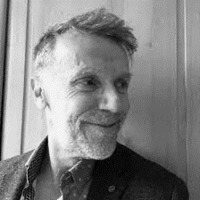
Uploads
Papers by AI Kano
This paper focuses on emerging art and culture scenes surrounding biotechnology specifically: bio art, biopunk (also known as bio hobby, DIY biology, kitchen bio, etc.) from the late 1990s to the early 2000s. This paper will also examine tactical media which emerged during the same period.
Emglish Abstract
These past 20 years or so, the question of how far art can expand within the social realm has been debated in the study of art activism, a field wherein art and social movement intersect. In this paper, by focusing on the anti-war, anti-nuclear Japanese wood block print media of A3BC(Anti-War, Anti-nuclear, and Arts of Block-print Collective) formed in Japan in 2014, I will propose some key points and hypotheses connected to the development of art activism in post-3.11 Japan. Research has clarified that, along with a DIY culture values that break down hierarchies, A3BC is a cultural movement that forms a collective, translocal movement between Asia and the West, and the confluence of the fields of art and social movements. In conclusion, A3BC indicates that, in the context of social studies and art history research, either field is an elusive framework. Moreover, this paper argues that academic research of art and politics requires a point of view that transcends the boundaries of conventional fields.
Eventwork is a convergence of art, theory, media and politics mixing multiple professional skills. To examine these modes of eventwork, we will examine a cultural event called ‘Tucumán Arde’ in 1968. Here, vanguard artists used counter-information, proliferated their images and deployed experimental art to challenge government propaganda.
According to Brian Holmes, Fordist modernization and post-Fordist alienation and immaterial production generate complex social problems such as ecological destruction, economic inequality and the repression of minorities. Additionally, Holmes denounces artistic and cultural resistances established in simply institutional terms such as “relational art” or “critical theory”. For Holmes, art activism is an earnest counter-movement against modernization and capitalism.
However, there is another perspective or strategy for art activism. The Japanese artist and art critic Yoshio Shirakawa proposes an attitude of being anti-Capitalist in both institutional and non-institutional forms. Shirakawa, for instance, argues that some tribal museums develop their own criteria of collection to support minorities and counter culture. He also points out anonymous and individual protest activities should be included in art activism.
In conclusion, we will define art activism and the forward agenda of the Eventwork concept: how to realize cooperative cultural practice in contemporary society? It seems to be difficult to expect fundamental transformation in the post-Fordist era as we are faced with critical problems such as nukes, repressive laws, and neo-liberalism. That is why artists are likely to be, or expected to become, mediators between individual talents, public engagement and social problems via aesthetic expressions. A significance of art activism is to utilize tactics to make alternative relations within and beyond the norms of each field and also of the notion of art activism itself.
Thesis Chapters by AI Kano
Books by AI Kano
再思「集體」:圖繪亞際木刻版畫集體的發展/編輯部
The Left-Wing Spirit of the Indonesian Artist Collective Taring Padi / CHEN Wei-Lun
印尼藝術家集體「稻米獠牙」的左翼精神/陳韋綸
Collaboration or Social Mobilisation? The Historical Context of Gotong-Royong and Its Politics / Krystie NG
自發協作還是社會動員?談Gotong-Royong的歷史獄警及其政治/吳君儀
How to Sustain a DIY Artist Collective? In the Case of A3BC / KANO Ai
如何持續發展一個DIY藝術家集體?:以A3BC為例/狩野愛
“To Exist Like a Mystery”: The Dynamic of Trans-Local Cultural Activism Network in East
Asia / LEE Chun Fung
「像充滿謎團的存在」:東亞跨地域文化行動的動態網絡/李俊峰
From “Popularisation” to “De-popularization”: Rethink Woodcut Printing in the Context of Chinese Contemporary Art / LI Ding
從「大眾化」到「去大眾化」:重新思考中國當代藝術語境中的木刻創作/李丁
This paper focuses on emerging art and culture scenes surrounding biotechnology specifically: bio art, biopunk (also known as bio hobby, DIY biology, kitchen bio, etc.) from the late 1990s to the early 2000s. This paper will also examine tactical media which emerged during the same period.
Emglish Abstract
These past 20 years or so, the question of how far art can expand within the social realm has been debated in the study of art activism, a field wherein art and social movement intersect. In this paper, by focusing on the anti-war, anti-nuclear Japanese wood block print media of A3BC(Anti-War, Anti-nuclear, and Arts of Block-print Collective) formed in Japan in 2014, I will propose some key points and hypotheses connected to the development of art activism in post-3.11 Japan. Research has clarified that, along with a DIY culture values that break down hierarchies, A3BC is a cultural movement that forms a collective, translocal movement between Asia and the West, and the confluence of the fields of art and social movements. In conclusion, A3BC indicates that, in the context of social studies and art history research, either field is an elusive framework. Moreover, this paper argues that academic research of art and politics requires a point of view that transcends the boundaries of conventional fields.
Eventwork is a convergence of art, theory, media and politics mixing multiple professional skills. To examine these modes of eventwork, we will examine a cultural event called ‘Tucumán Arde’ in 1968. Here, vanguard artists used counter-information, proliferated their images and deployed experimental art to challenge government propaganda.
According to Brian Holmes, Fordist modernization and post-Fordist alienation and immaterial production generate complex social problems such as ecological destruction, economic inequality and the repression of minorities. Additionally, Holmes denounces artistic and cultural resistances established in simply institutional terms such as “relational art” or “critical theory”. For Holmes, art activism is an earnest counter-movement against modernization and capitalism.
However, there is another perspective or strategy for art activism. The Japanese artist and art critic Yoshio Shirakawa proposes an attitude of being anti-Capitalist in both institutional and non-institutional forms. Shirakawa, for instance, argues that some tribal museums develop their own criteria of collection to support minorities and counter culture. He also points out anonymous and individual protest activities should be included in art activism.
In conclusion, we will define art activism and the forward agenda of the Eventwork concept: how to realize cooperative cultural practice in contemporary society? It seems to be difficult to expect fundamental transformation in the post-Fordist era as we are faced with critical problems such as nukes, repressive laws, and neo-liberalism. That is why artists are likely to be, or expected to become, mediators between individual talents, public engagement and social problems via aesthetic expressions. A significance of art activism is to utilize tactics to make alternative relations within and beyond the norms of each field and also of the notion of art activism itself.
再思「集體」:圖繪亞際木刻版畫集體的發展/編輯部
The Left-Wing Spirit of the Indonesian Artist Collective Taring Padi / CHEN Wei-Lun
印尼藝術家集體「稻米獠牙」的左翼精神/陳韋綸
Collaboration or Social Mobilisation? The Historical Context of Gotong-Royong and Its Politics / Krystie NG
自發協作還是社會動員?談Gotong-Royong的歷史獄警及其政治/吳君儀
How to Sustain a DIY Artist Collective? In the Case of A3BC / KANO Ai
如何持續發展一個DIY藝術家集體?:以A3BC為例/狩野愛
“To Exist Like a Mystery”: The Dynamic of Trans-Local Cultural Activism Network in East
Asia / LEE Chun Fung
「像充滿謎團的存在」:東亞跨地域文化行動的動態網絡/李俊峰
From “Popularisation” to “De-popularization”: Rethink Woodcut Printing in the Context of Chinese Contemporary Art / LI Ding
從「大眾化」到「去大眾化」:重新思考中國當代藝術語境中的木刻創作/李丁